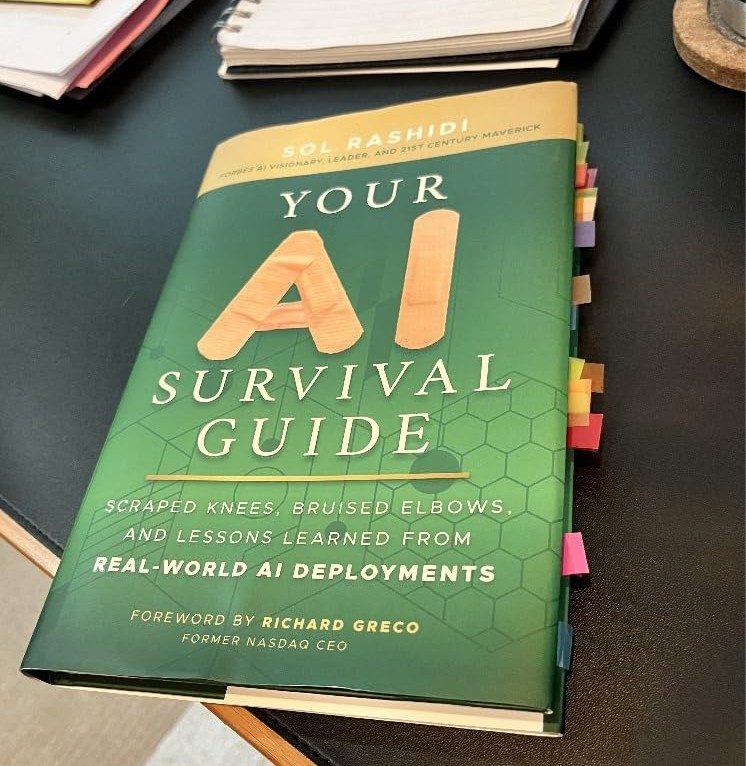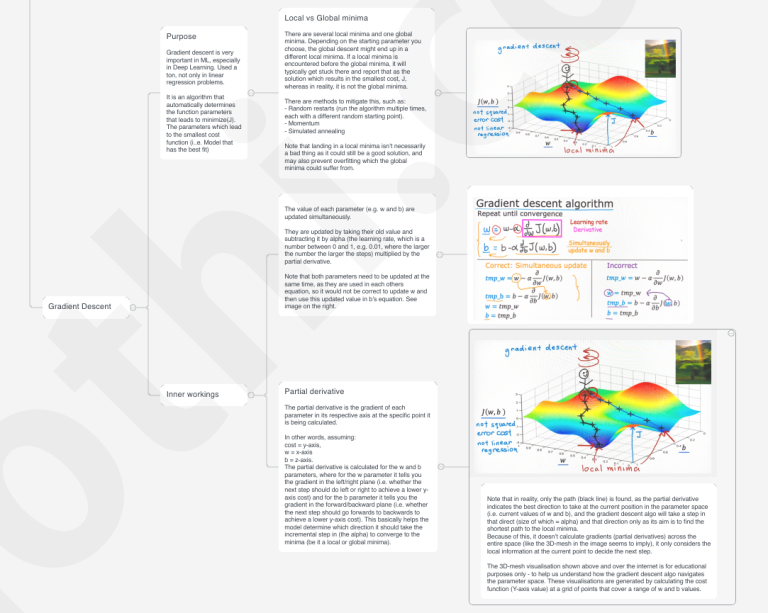Some notes on AI deployment from Sol Rashidi’s book ‘Your AI Survival Guide: Scraped Knees, Bruised Elbows, and Lessons Learned from Real-World AI Deployments‘.

She’s probably one of the best AI deployment practitioners out there. She’s a C-Suite executive (Chief Data/AI/Analytics Officer) at several Fortune 100’s, has 10 patents, and was the 1st Chief AI Officer. She also helped launch IBM Watson (which was my first encounter of NLP – sometime back in 2016-ish). In short, she’s helped deploy AI in the real world, at scale.
I personally think it’s a really helpful book. There’s already a ton out there on using AI for small scale businesses, but this is the first I’ve found that provides a framework for deploying it at an organisational level.
TL:DR
It always starts with the business case (the ‘why’). From there, select a single AI strategy that’s realistic based on your company’s actual maturity with data and processes (this helps narrow the focus). Then, when choosing a specific use case, find one that’s high-impact but not overly complex to deploy. The goal is basically a tangible, early win to build momentum.
The most important part is the preparation and design phase. This has to happen before any tool/software is selected. This means creating a detailed blueprint of the end-goal vision, performance metrics (current metrics and hopeful future metrics), risk mitigation plans, redesigned workflows (what the new workflow will be like using your AI solution) and protocols to help support others with transitioning to the new workflow. In short, the tech needs to be chosen to serve this plan, not the other way around.
Surprisingly, the biggest downfall of AI projects isn’t the technical complexity, but people. In fact, more people will be against AI because of the threat it poses to them and their current way of doing things, even if they don’t say it out loud. To pull of an AI deployment, a team needs to be put together that has grit and an open mind, not just technical expertise. You’ll also need to understand and manage the different personality archetypes involved (there’s 10 when it comes to AI), as they can completely derail the project. And finally (probably one of the most important points), a human MUST always be in the loop to review and validate the AI’s output before it’s used. Sounds obvious, but apparently a lot of teams skip this step due to too much trust and over-confidence in the AI model, and this has led to some pretty big fails.
Below’s a copy of my notes in case its helpful.

